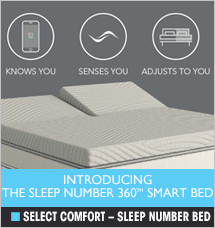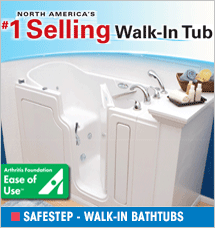
As a boomer, I feel fortunate that both my parents are still living, and until recently, were completely independent. It was at this new crossroads from independence to dependence, that I realized I had no degree in senior living arrangement choices and how they affect the pocket book. Please allow me to introduce you to the world of senior living.
‘Over 55' communities: These are usually independent houses, townhomes, or condos that are independently owned. They usually come with HOAs (Homeowner’s Association) fees which can cover anything from lawn maintenance, to club houses, pools, golf, snow shoveling, and more. Aside from the fact that they are limited to those people over the age of 55, they are no different from owning any other home. Often their attraction is to downsize into a community where there are built-in activities, ways to meet other folks of common interests, and have basic maintenance handled for you.
Independent living communities: These are most often buildings of two stories or more, with one- or two-bedroom apartments with small efficiency kitchens. These are made for seniors who don’t want to deal with a whole house anymore. Some meals are included in most independent living facilities giving you the option to cook or not cook as you desire.
The advantage of an independent living facility is that some meals are included, often transportation to and from entertainment and shopping centers is provided, and in-house or off-premise activities are planned for socialization. Another advantage is that as you age, and may require more and more assistance, most independent living facilities also house assisted living facilities, avoiding having to move elsewhere.
Assisted living communities: Assisted living is for people who do not require constant care but need assistance with activities of daily living (ADLs), such as help with eating, bathing, dressing, and medication management. The advantages are not only assistance with personal care but continued socialization. If you are moving into assisted living from the same independent living facility, you may continue to see your same friends and can continue to participate in outings and other activities arranged by the facility.
Skilled nursing: Skilled nursing is a medical residential setting. People who live in these types of settings require more than just assistance with their ADLs – they require medical assistance such as feeding tubes or ventilators. The advantage of living in a skilled nursing setting is that it offers continued long-term medical care without family and friends needing to care for them at this high level of constant 24-hour care.
Memory care: Memory care is a living situation in which doors and windows are locked and closely monitored for the safety of the residents. Residents who require this type of care have Alzheimer’s disease, dementia, or other memory-related problems.
Aging in place: Most seniors prefer to stay in their homes if at all possible. An aging in place option assists with this type of living. You may stay in your own home but need assistance with ADLs. An aide will come anywhere from a few hours to 24 hours a day to assist with anything from ADLs to cooking, cleaning, running errands, and medication management. The advantage is that you can continue to live at home in your own environment.
There are disadvantages to each of the above options as well. When a person becomes even slightly less independent, staying in their own home can cause risks of falling, seclusion, lack of nutrition, hygiene issues, and more. Independent living communities force people to leave the home and community they’re familiar with and can be expensive and less private. Assisted living is shared with other residents; you may have to wait your turn for non-emergency assistance. Skilled nursing and memory care units are extremely expensive and much trust in the facility is needed to know that you or your loved ones are being properly cared for.
The Costs of Each Option
Rentals: There is usually a month-to-month lease plus an initial security deposit or community fee. Some rental communities offer only independent living situations. Others may also include assisted living, while others may offer a full array of living situations including memory care units and skilled nursing. The advantage of renting is that you are not locked into long-term commitments. If your situation changes, you usually need to offer only 30 days’ notice, and then walk away. The disadvantage is that the rent can – and most likely will – go up by 2-5% per year.
Ownership: This requires an actual purchase of the dwelling and usually also includes a monthly maintenance fee. The advantage is that there is equity in an apartment whose value, like any other owned home, may go up. Some owned communities include care at all levels in the purchase price. In other words, if you are independent when you move in, but after a few years require assisted living or even skilled nursing, the purchase price may include this service for no extra fee. But beware – not all ownership communities are like this. A decline in health may force a move out but still require mortgage payments and monthly fees until the unit is sold.
Continuing care: This option offers a full continuum of care. There is usually a substantial entrance fee plus a monthly charge. Requirements vary from state to state: financial ability to pay for a specific time frame is required to be accepted into such a facility as well as medical criteria. However, you can move seamlessly from a low level of care to the highest level without ever needing to leave.
Would Medicare or Medicaid Help Pay for Any of These?
Medicare is a health insurance program that serves people over 65 and the disabled. Medicare will pay toward doctor and hospitalization charges, but it will not pay for any type of independent living arrangement. It will cover some healthcare expenses while in an assisted living facility, and it will usually pay for a skilled nursing facility or health care assistance in the home for those who choose to age in place. But get all the facts: time limits and percentage of payments vary considerably.
Medicaid on the other hand, is a financial assistance program. Almost all state Medicaid programs cover at least some of assisted living arrangements for eligible residents and usually all fees for skilled nursing or memory care units if the resident qualifies. Be sure you understand the rules in your particular state. Qualification for Medicaid is based on your financial situation; in most states, an individual must have less than $2,000 in countable assets to qualify – and what counts varies significantly from state to state.
Money spent in consultation with an elder law attorney could be money very well spent in order to learn what is required for qualification and how best to protect assets. The earlier you knows the rules, the better you are able to plan ahead. Some people believe they can “gift” their money away to their children so that they qualify for Medicaid, but it’s not that simple. Medicaid has a five year “look-back”: Any large assets that are transferred out of an account within the past five years, will be reviewed. There is even a penalty that for every $10,000 that is gifted away, the applicant must wait an additional month for eligibility.
Leslie Handler is an award-winning syndicated columnist. Follow her blog and read previously published essays at: http://www.lesliegoesboom.com/.



























































